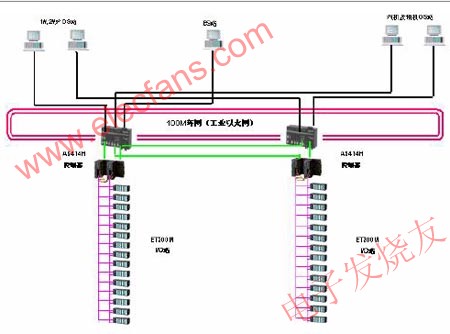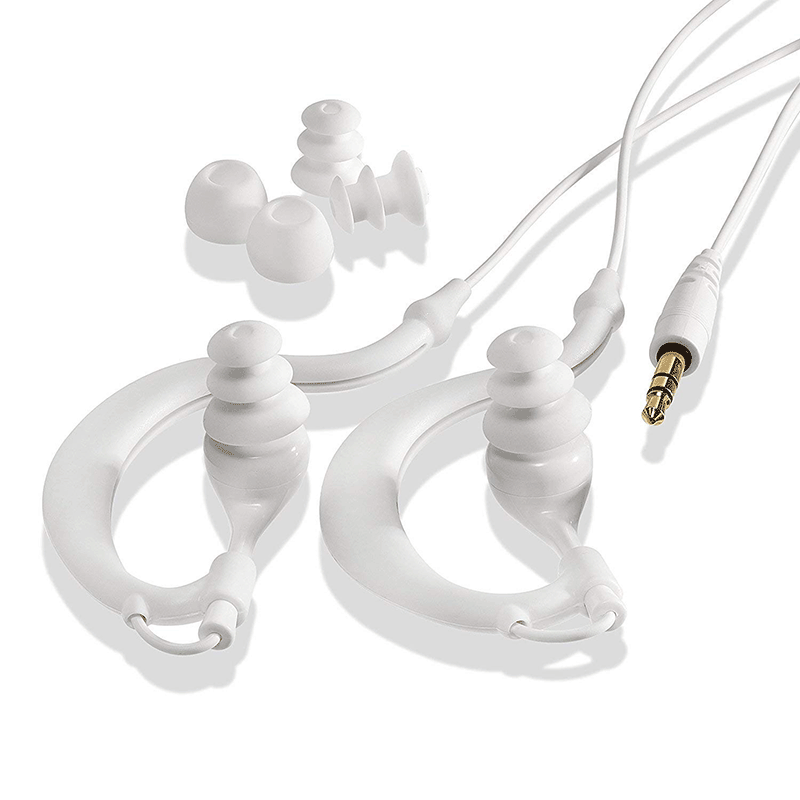Control system based on PCS7 and Profibus-DP fieldbus technology
A system overview With the rapid economic development, the pace of urbanization is also accelerating, and the problems of urban domestic waste and industrial waste disposal are becoming increasingly prominent. Hundreds of millions of tons of urban garbage are cleaned and transported annually throughout the country. The phenomenon of garbage surrounding cities is very common in major cities. Garbage has caused serious pollution to the atmospheric environment, the surface and groundwater, rivers and lakes, and the ecological environment is being severely damaged. Therefore, in light of the specific situation of the city, it has become one of the hotspots in the research of urban waste disposal to discuss related issues such as waste disposal technology, treatment system and its control strategy, and to find out a treatment solution with good treatment effect and economically feasible. The main advantage of incineration of waste disposal is that the waste reduction is the largest, and the harmlessness is relatively thorough. For example, incineration of waste-to-energy power generation is a method with a smaller footprint and better effect in the existing waste disposal methods. In addition, the establishment of a waste incineration power plant can solve the problem of groundwater pollution caused by garbage leachate. The waste residue after waste incineration enters the brick factory, which not only reduces pollution to the environment, but also produces certain economic benefits. Waste incineration treatment technologies such as municipal solid waste, industrial waste, sludge and waste rubber tires, using waste heat from waste incineration to generate electricity and turning waste into treasure will be an important development direction of environmental protection technology in the future. The working principle of garbage incineration: the garbage is sent to the drying bed of the incinerator through an automatic feeding unit for drying, and then sent to the grate. The grate throws the garbage under the impulse of the impulse aerodynamic device, and the uniform air holes on the garbage and the grate pieces are ejected The combustion-supporting air is combusted, the heat generated by the combustion enters the waste heat boiler, and the boiler feed water is heated to steam with a pressure of about 4Mpa and a temperature of about 400 ° C, and then the turbine generator set is driven to generate electricity. The flue gas volatilized and cracked from the main combustion chamber enters the second and third stage combustion chambers for further combustion, so that the temperature of the flue gas is as high as 1000 ℃. The flue gas stays here for a short time, so that the toxic flue gas decomposes quickly. The flue gas treatment equipment and dust removal equipment are discharged into the atmosphere after being processed. The main technical parameters of the waste incineration power plant: 2 incinerator boilers, 350t / day garbage treatment capacity, 35t / h steam volume, superheated steam pressure 4.0Mpa, superheated steam temperature 400 ℃, furnace temperature 980 ℃, feed water temperature 145 ℃. One set of steam turbine generator set, main steam pressure 3.9Mpa, main steam temperature 390 ℃, generating power 12MW. Two system requirements 1. Provide a complete DCS control system for waste incineration and waste heat power generation; 2. The control system adopts full redundancy configuration to ensure the system is efficient, reliable and safe; 3. The monitoring function is friendly and easy to use, and the Chinese operation interface; 4. Provide easy-to-learn function configuration, and special function blocks and libraries to facilitate system function expansion or modification. Three system configuration and function realization The control system uses Siemens' most advanced process control system PCS7 and Profibus-DP fieldbus technology. The control system not only has to take over the production process control of the whole plant, but also needs to quickly adjust the control program according to the change of garbage composition to ensure the incineration process. Safety, so that it no longer produces secondary pollution. The communication rate of the Profibus-DP bus can reach 12Mbps, and the Profibus-DP bus network composed of the S7-414H dual-system hot standby system and the ET200M distributed I / O constitutes a switching structure, and realizes disturbance-free automatic switching in the event of a failure. The host computer adopts WinCC V6.0 configuration software for system configuration. The plant's waste incineration process introduces Canadian RICHWAY's patented technology, adopts four-stage pulse grate, and all indicators meet international environmental protection requirements. The main loop control functions provided by the control system are: furnace pressure control, drying grate temperature control, recirculation flue gas temperature control, boiler drum water level control, superheated steam temperature control, hot well water level control, and deaerator water level control. 1. Operator station (OS station) and engineer station (ES station) The DCS system is equipped with 4 independent operator stations (OS stations), of which two incinerators are equipped with two OS stations, and turbine and auxiliary machine control are equipped with two OS stations. Each OS adopts mature and reliable DELL commercial computer. The OS station provides operators with graphics, lists, operations, historical data reproduction, etc., which can be output on the printer. PCS7 OS station application software running Windows 2000 multi-task network operating system. All OS stations are all-on-duty configuration, the image, operation and data are consistent, and the operation of the machine, furnace and electricity is realized. The system is equipped with one set of engineer station (ES station), using mature and reliable DELL commercial computer. The ES station mainly completes the generation and downloading of system data such as real-time databases, control blocks, graphics, trends, and reports, and completes detailed self-diagnosis of the system and the list and backup of system data. PCS7 ES station application software running Windows 2000 multi-task network operating system. Professionals can configure and maintain the system through the engineer station. Professional engineers can modify the system on-site or off-site when authorized. At the same time, all operating conditions and control logic can be viewed on the engineer station, increasing the degree of user control of the system and the transparency of system software and hardware. When no configuration is required, the same software as the operator station can be run. The entire system is equipped with 2 network printers for record printing and CRT image copying. The printer uses DELL network printer. 2. Redundant CPU414H central control unit The central controller of the field control station of this automatic control system adopts a redundant design, which consists of 2 sets of AS-400 central controllers. They are pre-installed with redundant software and connected to each other through a communication interface. In the normal operation of the system, when a central controller fails, another central controller can automatically take over all work, ensuring that the system continues to operate normally. Therefore, the AS-400 central controller of the system field control station has good redundancy performance. The central processor of AS adopts the CPU above S-414 in the S7-400 series of industrial controllers, which is specially designed for process control applications. The bottom program of the CPU chip is written in PASCAL-like language to provide process control languages ​​such as CFC and SFC. platform. Redundancy software is pre-installed in the central controller, and users can completely ignore its redundancy characteristics during configuration, just enter the user program as for non-redundant system configuration. 3. Remote I / O station Two IM153-2 communication interface modules are inserted on the active backplane bus of each distributed I / O station, and communicate with the AS-400 central control station in real time through 2 independent PROFIBUS-DP field buses. During the operation of the system, when one of the IM153-2 communication interface modules fails, the system can automatically switch to another IM153-2 communication interface module, and it can be hot swapped to replace the failed communication interface module. Affect the normal operation of the system. 4. Redundant communication network As a standard industrial Ethernet connection device, CP443-1 uses a high-protection communication cable on the physical layer. The industrial Ethernet card has a CPU that can independently process communication signals. High-speed industrial Ethernet is based on the communication protocol of industrial Ethernet, and the communication speed is increased to 100M / s. High-speed Ethernet in SIMATIC NET uses the full-duplex parallel (FDX) communication mode. This mode allows stations to send and receive data at the same time, and the communication rate can be doubled. SIMATIC NET also uses switching technology on high-speed Ethernet. The switch module is used to divide the entire network segment into several subnets. Each subnet can independently form a data communication network segment, which can greatly improve communication efficiency. Due to the existence of data communication blocking on the network segment on ordinary Ethernet, the actual communication technology on the network is only 40%. After adopting full-duplex parallel communication technology and switching technology, the communication capabilities of the network can be fully utilized. 5. Main monitoring function description: (1) Process flow display: According to the system process control process, the process flow chart is expressed in the form of a flow chart; (2) Sequential control operation guide: Provide SFC sequential function chart in PCS7 to monitor the sequential control process graphically; (3) System control and setting functions: The control system provides a rich loop control monitoring library, which can display and monitor the loop control and parameter settings in a centralized manner; (4) Trend display: display the trend of important process parameters in real-time and historical trends; (5) Alarm record and display (6) Report management: provide daily and monthly report printing functions, which can provide regular printing, event-driven printing, summon printing, etc .; (7) User level management: In order to ensure the safe operation of the system, the system provides multi-level user rights management, and users with different rights correspond to different operation ranges. Four use effects Analysis The long-term operation of the DCS system proved that all technical indicators have reached the international advanced level, and the main performances are as follows: (1) High combustion efficiency: garbage is mixed with air on the grate and burned evenly, and the burnout rate of garbage is high; (2) Wide range of garbage disposal: Due to the design of control strategies adjusted according to different types of garbage, the scope of garbage disposal has been greatly improved and can handle industrial garbage, domestic garbage, waste rubber tires, etc. (3) Low operation and maintenance costs: due to the high level of automatic control and fewer operating personnel, the cost of regular and irregular maintenance is low, which reduces maintenance costs; (4) High reliability: After long-term operation, the failure rate of the control system is very low, and the system availability rate can reach more than 99.9%, which meets the design requirements; Five: summary The modules of UniMAT UN300 series products are used here, and the good performance requirements in the redundant system make the work more stable and greatly improve the efficiency of the production line.
The ear-hook earphone refers to a kind of earphone that is added with an ear-hook on the side of the earphone for convenient use. Different from in-ear earphones, ear-hook earphones are a type of earphones and earbuds that are divided according to how they are worn. Design principle: the connection between the two units of the earphone and the wearing of the fixed beam can be canceled, with a beautiful hook to make it hang on the ear.
Advantages:
1: The way of ear hooks ensures the reliability of the user's wearing. In the design of earplugs, the unit is often enlarged to meet the needs of sound quality.
2: The design of the earhook fully demonstrates the design capabilities of the earphone manufacturer, from the design to the reliability of the wearing of the ergonomic design.
Earhook Earphones,Ear Hook Headphones,Earhook Headphones With Mic,Ear Hook Headphones With Mic Shenzhen Linx Technology Co., Ltd. , https://www.linxheadphone.com

